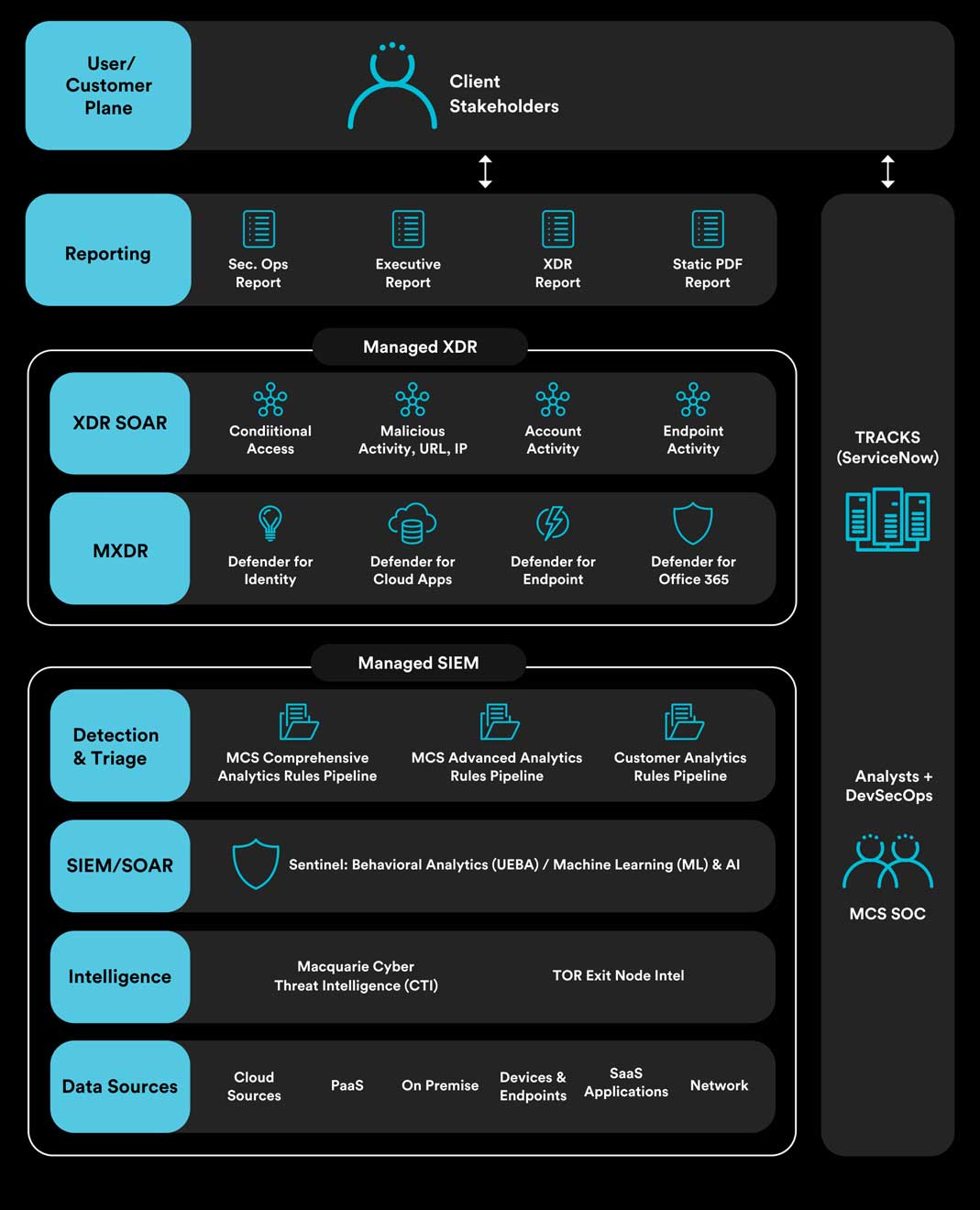
CAUDIT Cloud: Powering the Next Generation of Research Infrastructure in Australia
TL;DR CAUDIT Cloud is a sector-aligned initiative developed in partnership with Macquarie Cloud Services and Dell to provide sovereign, future-ready
Home Cyber Security Managed XDR
Powered by Microsoft Defender, samlessly protect your organisation’s data, users, and devices.
Sandeep Singh,
Architect Cyber Security
XDR platforms coordinate cyber threat detection and response across an organisation’s entire digital estate. They help quickly stop cyber attacks by seamlessly consolidating various security tools into a single platform, breaking down traditional security silos to enhance cyber threat protection. However, managing an XDR platform effectively requires expertise, continuous monitoring, and rapid response – this is where a Managed Service Provider (MSP) adds value.
With a Managed XDR service, businesses benefit from best-in-class security expertise without the complexity of managing it themselves. Strengthen your Cyber Security posture with Macquarie Cloud Services and let our experts handle the evolving threat landscape for you.
Expert security teams proactively detect, investigate, and mitigate threats in real time, reducing dwell time and minimising damage.
MSP’s ensure XDR solutions work across your existing security stack, eliminating compatibility issues and maximising protection.
Leverage up-to-date threat intelligence, AI-driven analytics, and industry-specific insights to stay ahead of emerging cyber threats.
Free up internal IT teams by offloading complex security operations, allowing them to focus on strategic business initiatives.
Avoid the overhead of building an in-house SOC (Security Operations Centre) while gaining enterprise-grade cybersecurity expertise at a predictable cost.
Extended Detection and Response (XDR) is Microsoft’s unified security platform that integrates and correlates data from multiple security layers – such as endpoints, identities, cloud applications, email, and data stores – to provide comprehensive threat detection and response across an organisation’s entire digital environment. By leveraging artificial intelligence and automation, XDR enhances visibility into advanced cyber threats, streamlines incident investigation, and enables rapid, coordinated responses, thereby improving an organisation’s overall security posture.
The skilled resources, repeatable processes and technology stack including Macquarie Cloud Services Intellectual Property (IP) in the form of Cyber Threat Intelligence Platform, Detection Rules, Security Baseline and Reporting capability, adds a human factor to the complex landscape of Cyber Security. This unique capability empowers us to deliver tailored security services that align perfectly with our customers’ needs.


TL;DR CAUDIT Cloud is a sector-aligned initiative developed in partnership with Macquarie Cloud Services and Dell to provide sovereign, future-ready

TL;DR Azure Virtual Desktop (AVD) is transforming how research environments achieve security, compliance, and operational efficiency. By simplifying alignment with the

TL;DR Research computing is entering a transition phase where traditional HPC and AI workloads must coexist. High-performance computing (HPC) has
Managed XDR (Extended Detection and Response) is a Cyber Security service that integrates and correlates threat data across various security layers, providing comprehensive protection against modern cyber threats.
Managed XDR gathers and correlates data from multiple security sources, including endpoints, networks, and cloud services. It uses AI-driven analytics and human expertise to detect and respond to threats in real time, ensuring a proactive defense against cyber-attacks.
It offers consolidated visibility, advanced analytics, and real-time threat detection and response, all while leveraging AI and machine learning to adapt to emerging risks.
XDR stands for Extended Detection and Response. It is a unified security solution that integrates multiple security tools (such as endpoint, network, and cloud data) to detect, investigate, and respond to threats more effectively by providing comprehensive visibility across the entire IT environment.
It bridges security gaps, automates incident responses, minimises investigation times, and improves resource efficiency across your IT landscape.
Macquarie’s Managed XDR combines its proprietary technology stack with AI-driven tools and human expertise, providing a unified, scalable platform that integrates seamlessly into existing security infrastructures.
Yes, it integrates with your current security systems and enhances their capabilities by consolidating data from multiple sources for better threat detection and incident response.
Absolutely, the solution is designed to scale alongside your organisation’s needs, making it suitable for mid-sized to enterprise organisation’s.
XDR security offers enhanced threat detection and response capabilities by integrating data across endpoints, networks, and cloud environments. It simplifies security operations by providing unified visibility, reducing response times, automating workflows, and improving the efficiency of security teams in identifying and mitigating cyber threats.

